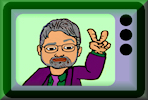The Data Link Layer of the OSI model
The Data Link Layer is Layer 2 of the seven-layer OSI model of computer networking. The Data Link layer deals with issues on a single segment of the network.
Layer two of the OSI model is one area where the difference between the theoretical OSI reference model and the implementation of TCP/IP with the competing Department of Defense (DoD) model. As we will discuss with the implementation of TCP/IP there is one lower layer called the network interface layer that encompasses Ethernet.
The IEEE 802 standards map to the lower two layers (Data Link and Physical) of the seven-layer OSI networking reference model. Even though we discussed many of these Ethernet terms in discussing the Physical Layer of the OSI model, we also discuss them here in the context of the Data Link Layer.
The IEEE 802 LAN/MAN Standards Committee develops Local Area Network standards and Metropolitan Area Network standards. In February 1980, the Institute of Electrical and Electronics Engineers (IEEE) started project 802 to standardize local area networks (LAN). IEEE 802 splits the OSI Data Link Layer into two sub-layers named Logical Link Control (LLC) and Media Access Control (MAC).
The lower sub-layer of the Data Link layer, the Media Access Control (MAC), performs Data Link layer functions related to the Physical layer, such as controlling access and encoding data into a valid signaling format.
The upper sub-layer of the Data Link layer, the Logical Link Control (LLC), performs Data Link layer functions related to the Network layer, such as providing and maintaining the link to the network.
The MAC and LLC sub-layers work in tandem to create a complete frame. The portion of the frame for which LLC is responsible is called a Protocol Data Unit (LLC PDU or PDU).
IEEE 802.2 defines the Logical Link Control (LLC) standard that performs functions in the upper portion of the Data Link layer, such as flow control and management of connection errors.
LLC supports the following three types of connections for transmitting data:
• Unacknowledged connectionless service:does not perform reliability checks or maintain a connection, very fast, most commonly used
• Connection oriented service. Once the connection is established, blocks of data can be transferred between nodes until one of the nodes terminates the connection.
• Acknowledged connectionless service provides a mechanism through which individual frames can be acknowledged
IEEE 802.3 is an extension of the original Ethernet. includes modifications to the classic Ethernet data packet structure.
The Media Access Control (MAC) sub-layer contains methods that logical topologies can use to regulate the timing of data signals and eliminate collisions.
The MAC address concerns a device's actual physical address, which is usually designated by the hardware manufacturer. Every device on the network must have a unique MAC address to ensure proper transmission and reception of data. MAC communicates with adapter card.
Carrier Sense Multiple Access / Collision Detection is (CSMA/CD) a set of rules determining how network devices respond when two devices attempt to use a data channel simultaneously (called a collision). Standard Ethernet networks use CSMA/CD. This standard enables devices to detect a collision.
After detecting a collision, a device waits a random delay time and then attempts to re-transmit the message. If the device detects a collision again, it waits twice as long to try to re-transmit the message. This is known as exponential back off.
IEEE 802.5 uses token passing to control access to the medium. IBM Token Ring is essentially a subset of IEEE 802.5.
The IEEE 802.11 specifications are wireless standards that specify an "over-the-air" interface between a wireless client and a base station or access point, as well as among wireless clients. The 802.11 standards can be compared to the IEEE 802.3™ standard for Ethernet for wired LANs. The IEEE 802.11 specifications address both the Physical (PHY) and Media Access Control (MAC) layers and are tailored to resolve compatibility issues between manufacturers of Wireless LAN equipment
The IEEE 802.15 Working Group provides, in the IEEE 802 family, standards for low-complexity and low-power consumption wireless connectivity.
IEEE 802.16 specifications support the development of fixed broadband wireless access systems to enable rapid worldwide deployment of innovative, cost-effective and interoperable multi-vendor broadband wireless access products.
A network interface controller (NIC), also known as a network interface card or network adapter, implements communications using a specific physical layer and data link layer standard such as Ethernet. The 1990s Ethernet network interface controller shown in the photo has a BNC connector (left) and an 8P8C connector (right).
